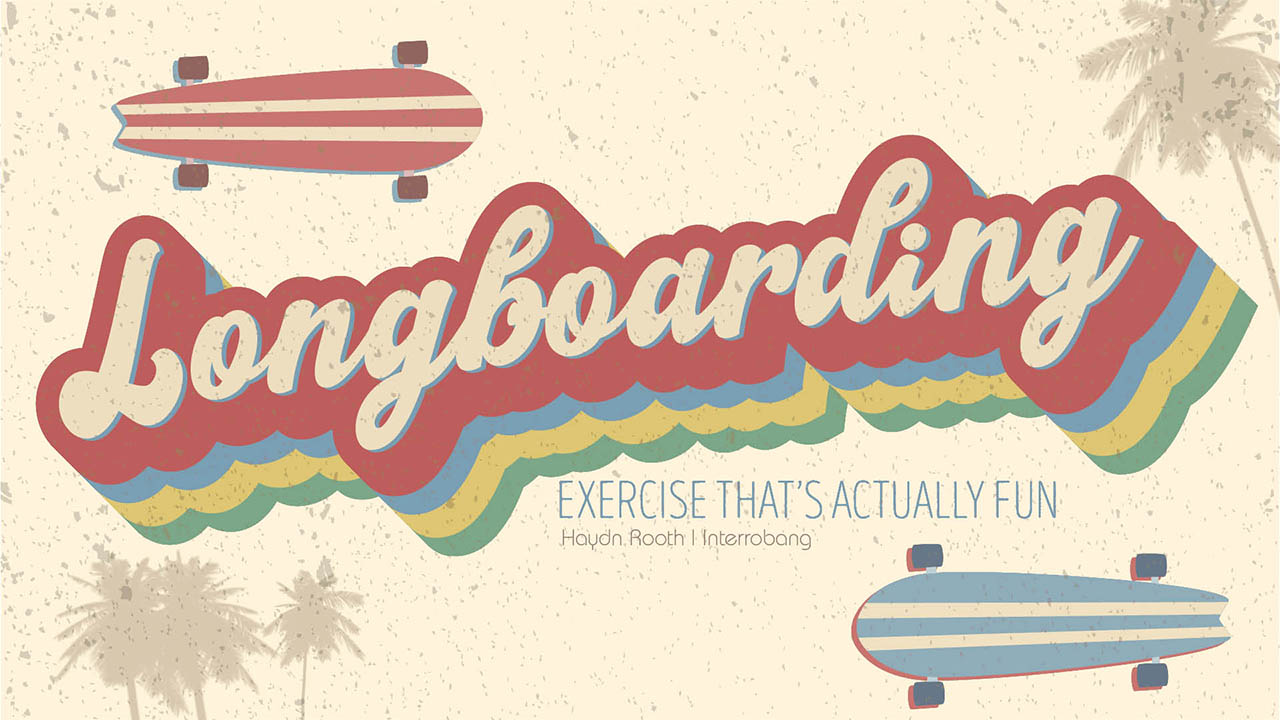Longboarding: exercise that's actually fun

Invented by Californian surfers during the ’50s, skateboarding has been recognized as not only an extreme sport, but even an Olympic sport as of 2020. However, long before the Zephyr team of Dog Town would popularize the sport in the ’70s with their free-riding competition, Hawaiian surfers in the ’50s began crafting very interesting decks. If the ocean waves were too low or too choppy, Hawaiian surfers would experiment with building ‘concrete surf boards’.
Larger wheels enabled the board to mimic the rolling waves of the ocean, while a larger and longer board provided stability for the rider. With a board built, the surfer would then be ready to tackle ‘sidewalk surfing’. The decks crafted by Hawaiians made their way to the mainland in California, where the surfers modified them and made the skateboard what it is today. However, the original decks made by Hawaiians are what are known today as the classic longboard.
Longboarding has been growing in popularity as more and more people are noticing the benefits of owning one. What was once thought to be a toy for slackers to get around town is now being looked at as a great alternative to typical cardio exercises and the standard carbon-emitting transportation methods. Now, cruising into work on your longboard is a fun, green and active way to commute.
One of the reasons for the growth in popularity is the lifestyle attached to longboarding. These lifestyles incorporate healthy eating, active living and green attitudes into many aspects of their daily lives. The reason for this is the easy-going nature of longboarding. The smooth movements coupled with imagery of surfing, long hair and sunny days paints a picturesque image of Californian living.
So, what makes longboarding such a positive and exercise-rich activity? The cardiovascular benefits of longboarding are great and increase with duration. So much so that a lot of longboarders are engaging in longdistance rides, races and expeditions. In fact, each year the Canadian Cancer Society holds a three-day long longboarding trip from Toronto to Niagara Falls in support of breast cancer research. This trip is roughly 153 kilometres.
Aside from the obvious cardio benefits of longboarding, muscle growth and development are also upsides. The leg is vigorously worked out in a long-distance ride, however some may be quick to point out that only one leg is used. This is untrue as the sedentary leg is the sole balancing pole between your body and the board. Constantly shifting weight and balancing is an incredible workout in itself.
The other answer to the one-leg debate is the advent of skogging. Skogging is a pushing technique where the rider switches the pushing foot interchangeably as if they were running. Skogging enables the rider to work-out both legs while simultaneously working the core an additional amount due to the high volume of twisting. The balancing act of riding also works out the core ab muscles in addition to the general strengthening of leg muscles.
Overall, longboarding is a fun way to incorporate cardio into your routine. Longboarding is also considered to be good for building general muscle in the leg and abdominal areas. Being a green method of transportation is an amazing upside as well, especially so in this fragile climate we currently live in. Grab a deck, hit the pavement and enjoy one of the most fun ways to travel.














